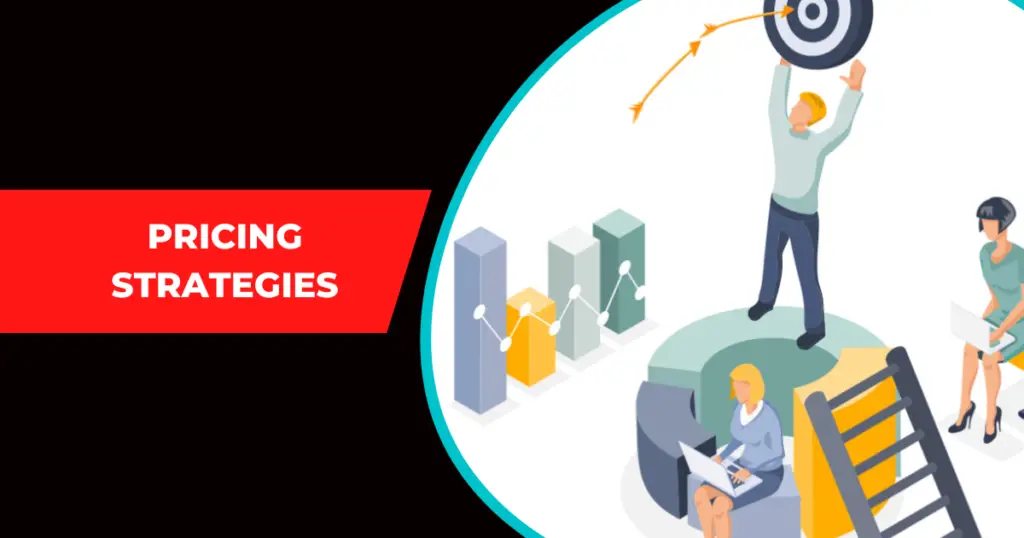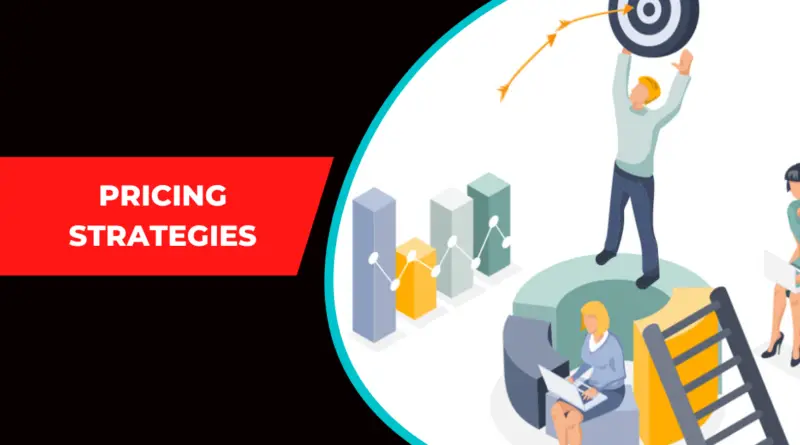Pricing Strategies – Examples and Best Practices for Businesses
What is a Pricing Strategy & Why is it Important?
A pricing strategy is an important part of any business plan and can make or break a company’s success. It is a plan that outlines how the company will set prices for its products and services. Pricing strategies are used to attract customers, increase sales, maximize profits, and compete with other companies in the same market.
Different types of pricing strategies exist, such as penetration pricing, skimming pricing, value-based pricing, and dynamic pricing. Each type has its own advantages and disadvantages that must be carefully considered when creating a pricing strategy for your business.
Understanding the different types of pricing strategies can help businesses make informed decisions about their product or service offerings and ensure they are maximizing their profits while still providing value to their customers.

Common Types of Pricing Strategies & Examples
Pricing strategies are an important part of any business. It helps you to determine how much to charge for your products or services, and it can be used to influence customer behavior. Different types of pricing strategies can help businesses maximize their profits. Some common pricing strategies include dynamic pricing, cost-plus pricing models, penetration pricing, skimming price strategies and value-based pricing.
Each of these has its own advantages and disadvantages that should be taken into consideration when deciding on the best approach for your business.
What is Penetration Pricing?
Penetration pricing is a pricing strategy in which a company sets a low price for a new product or service when it is first introduced to the market. The goal of this strategy is to attract customers quickly and gain market share. Once a company has established itself in the market, it can gradually increase its prices.
Penetration pricing is commonly used by companies that are entering a new market or launching a new product. It is also used by companies that are trying to gain a competitive advantage over their rivals.
Example of Penetration Pricing
One example of penetration pricing is the launch of a new smartphone. Let’s say that a company has developed a new smartphone that is equivalent to the iPhone 6. If the company was able to sell their new smartphone for $600, it would be a profitable venture. The company would be able to service its customers and make a profit on its product as a result. The average price of iPhones is around $650; this means that the new smartphone is being sold for around 50% off of an iPhone!
What is Dynamic Pricing?
Dynamic pricing is a pricing strategy that involves adjusting the price of a product or service in real-time based on various external factors. These factors can include market demand, competitor pricing, and other market conditions. The goal of dynamic pricing is to maximize revenue by optimizing prices to match the current market conditions.
Dynamic pricing is commonly used by companies in industries such as transportation, hospitality, and e-commerce. It allows companies to adjust their prices based on fluctuations in demand and supply, which can help them remain competitive and profitable.
Example of Dynamic Pricing
One example of dynamic pricing is the pricing strategy used by airlines. Airlines use dynamic pricing to maximize revenue by adjusting the price of tickets based on factors such as the time of day, day of the week, and the number of passengers making the trip.
An airline may offer a promotion or discounted rates for a period of time such as during the week or on certain days, and then raise the price after that time period is over.
The strategy also adjusts the price of tickets based on the demand for a particular flight. If a flight has been booked for weeks in advance, but nobody is buying it at the initial price set by the airline, it could increase in price. until it sells out.
What is Cost-Plus Pricing?
Cost-plus pricing is a pricing strategy that involves adding a markup to the total cost of producing a product or service to determine its final price. The total cost of production includes both variable costs (such as raw materials and labor costs) and fixed costs (such as rent and utilities). The markup added to the total cost can vary depending on factors such as the industry, the level of competition, and the desired profit margin.
Cost-plus pricing is commonly used by companies in industries such as manufacturing and construction. It allows companies to ensure that they are covering all of their costs while still making a profit.
Example of Cost-Plus Pricing
One example of cost-plus pricing is a construction company that uses this pricing model to determine the price of building a new house. The company would first calculate all the variable costs associated with building the house, such as the cost of raw materials, labor costs, and equipment rental fees. They would also factor in all the fixed costs associated with running the business, such as rent, utilities, and insurance.
Once the total cost of production is determined, the company would then add a markup to the cost to determine the final price of the house. The markup added could vary depending on factors such as the level of competition in the market and the desired profit margin.
For example, if the total cost of production for building the house is $200,000 and the company wants to add a 20% markup, the final price of the house would be $240,000 ($200,000 + 20% markup).
This pricing strategy allows the construction company to ensure that they are covering all their costs while still making a profit.
What is Skimming Price Strategy?
Skimming price strategy is a pricing strategy that involves setting a high price for a product or service during its initial introduction to the market. This strategy is often used by companies that have invested heavily in research and development or have a strong brand reputation. The high price is intended to create a perception of high quality and exclusivity for the product or service.
The skimming price strategy is typically used for short-term sales and generates a large profit margin for the company. As the market becomes saturated with competitors, the company may eventually lower the price to remain competitive.
Example of Skimming Price Strategy
One example of skimming price strategy is Apple’s pricing strategy for its new product launches. When Apple releases a new product, it starts at a price point that is about the same as its predecessor but the company quickly starts increasing the price of its product. This strategy can be attributed to Apple’s saturation in market share and ability to easily maintain high prices for their products.
Another example of a skimming price strategy is Amazon’s pricing for their Kindle books. Amazon sells their e-books at a very low introductory price and then increases the prices over time to maximize profits. This pricing strategy is sometimes called “skimming the cream” because it maximizes profits from those who are willing to pay high prices, but makes it less profitable for those who are not willing to pay these higher prices.
What is Value-Based Pricing?
Value-based pricing is a pricing strategy that involves setting the price of a product or service based on the perceived value to the customer. This strategy is often used by companies that offer unique or innovative products or services that are difficult to compare to other products in the market.
Value-based pricing focuses on the benefits that the product or service provides to the customer, as opposed to the cost of production. By focusing on the perceived value to the customer, companies can charge a higher price for their products or services.
Example of Value-Based Pricing
One example of value-based pricing is the pricing strategy used by luxury car manufacturers. Luxury car manufacturers such as BMW, Mercedes-Benz, and Audi use value-based pricing to set the price of their vehicles. These companies focus on the value of their cars by giving customers a variety of features, availability, and specifications.
For example, BMW vehicles are typically offered with a value proposition that includes high-performance engines, long warranties, and luxurious interiors.
Another example of value-based pricing is the pricing strategy adopted by luxury hotels. These hotels focus on the value of their rooms rather than the cost of rooms to attract clients and distinguish themselves from competitors.
For example, top luxury hotel chains like The Four Seasons Hotel in New York City offer family suites for up to 15 people for $3500 per night during off season whereas other major hotel chains charge about $6,000 per night during peak season.
Best Practices for Developing a Winning Pricing Strategy
Developing a pricing strategy for your business can be a challenging task. It requires a thorough understanding of your target market, competition, and costs.
In this blog post, we will explore the best practices for developing a winning pricing strategy.
1. Understand Your Target Market
The first step in developing a winning pricing strategy is to understand your target market. This includes understanding their needs, preferences, and willingness to pay for your product or service. Conducting market research and analyzing customer data can help you determine the optimal price point for your offerings.
2. Analyze Your Competition
It’s important to analyze your competition to determine their pricing strategies, strengths, and weaknesses. This will help you determine how to set your prices.
3. Take Advantage of Market Conditions
The price point you choose should be based on the current market conditions and consumer tastes. Consider analyzing industry trends and what competitors are doing before setting a price point.
4. Create a Unique Value Proposition
When considering the pricing of your product or service, it’s important to create a unique value proposition that differentiates your offering from the competition’s offerings in order to stand out from the crowd, generate word-of-mouth recommendations, and make consumers want more of your offerings as opposed to looking elsewhere for similar products or services.
Pricing Strategies for Different Industries & Segments
Pricing strategies are not one-size-fits-all, and different industries and customer segments require unique approaches. In this blog post, we will explore pricing strategies for different industries and segments.
1. Retail Industry
The retail industry is highly competitive, and pricing is a critical factor in attracting customers. Retailers often use promotional pricing, such as sales and discounts, to attract price-sensitive customers. Dynamic pricing, which involves adjusting prices based on demand, is also becoming increasingly popular in the retail industry.
2. Technology Industry
The technology industry is known for its innovation, and pricing strategies must reflect the value of the product or service. Subscription-based pricing, where customers pay a monthly or annual fee for access to the product , is often used in the technology industry.
3. Medical Industry
The medical industry has many products, services, and providers to choose from, making it difficult for consumers to compare prices. Therefore, healthcare providers typically offer a variety of price points to suit different customer segments with different needs and expectations.
For example, hospitals may offer patients complimentary parking while an emergency room will likely charge more than a regular doctor’s office visit because of the level of treatment received in the ER. The private sector initiatives to curb healthcare costs will likely lead to a rise in health insurance pricing.
How to Monitor Your Performance on Different Pricing Strategies?
When it comes to pricing strategies, it is important to track and monitor customer responses to different prices. This is a critical step in understanding the impact of different pricing strategies and making sure that they are working as intended.
Data points such as customer engagement, conversion rate, and overall sales can be used to analyze how customers react to different prices. By monitoring these data points, you can gain valuable insights into which pricing strategies are working well for you and which ones need improvement. This will help you make better decisions about your pricing strategy and ensure that you are maximizing your profits.
What are the most important factors to consider when setting a pricing strategy?
When setting a pricing strategy, there are several important factors to consider. These include the value of the product or service being offered, the target audience and their purchasing power, competition in the market, and the cost of production and marketing. Additionally, pricing strategies should also take into account customer preferences and trends in order to ensure that customers find the product or service attractive. By taking all these factors into consideration, businesses can create a pricing strategy that is both competitive and profitable.
How do you determine the optimal price for a product or service?
Determining the optimal price for a product or service is an important step in the success of any business. It involves understanding the customer’s needs, analyzing competitor pricing, and taking into account production costs. The optimal price should be set to maximize profits while still being attractive enough to customers.
To determine the optimal price, businesses need to consider factors such as market demand, competitors’ prices, production costs, and customer expectations. These factors will help them decide on a price that is both competitive and profitable. Additionally, businesses should also factor in any discounts or promotions they may offer to customers in order to make their product or service more attractive. By carefully considering these factors when setting prices, businesses can ensure they are charging an optimal rate for their products and services.
How can you determine the best pricing model for your business?
When it comes to pricing models, there is no one-size-fits-all solution for businesses. The best pricing model for your business depends on the type of product or service you offer, your target audience, and the competitive landscape.
To help you determine the best pricing model for your business, it’s important to consider factors such as customer value, cost structure, market demand, and competitor analysis. Additionally, it’s important to understand different types of pricing models such as subscription-based pricing and tiered pricing in order to decide which will work best for your business. With careful consideration and research into each option available to you, you can make an informed decision about which pricing model is right for your business.
How do you ensure your pricing strategy is competitive in the market?
Pricing is an important factor in determining the success of a product or service. It is essential to have a pricing strategy that is competitive in the market and meets customer needs. To ensure your pricing strategy is competitive, you need to understand your competitors’ prices and the value you offer compared to them.
Additionally, you should consider factors such as customer segmentation, market trends, and cost structure when setting prices. You should also use data-driven insights to adjust your pricing strategy as needed and ensure that it remains competitive in the market.
What are some common mistakes to avoid when setting a pricing strategy?
Setting a pricing strategy is one of the most important decisions you can make for your business. It can affect the profitability of your company, customer satisfaction, and even your brand image. Therefore, it is essential to understand common mistakes to avoid when setting a pricing strategy.
These mistakes include setting prices too high or too low, failing to consider competitors’ prices, not taking into account customer preferences and expectations, and not considering the cost of production or delivery. By avoiding these errors in pricing strategy development, you can ensure that you are maximizing profits while also providing customers with an attractive value proposition.




Hi Excellent work putting this together! I wonder what AI will do in this space over the next five years.
https://www.lightraysolutions.com/power-bi-consulting-services/
Hey Thanks putting this together! I question what AI will do in this space over the next five years.